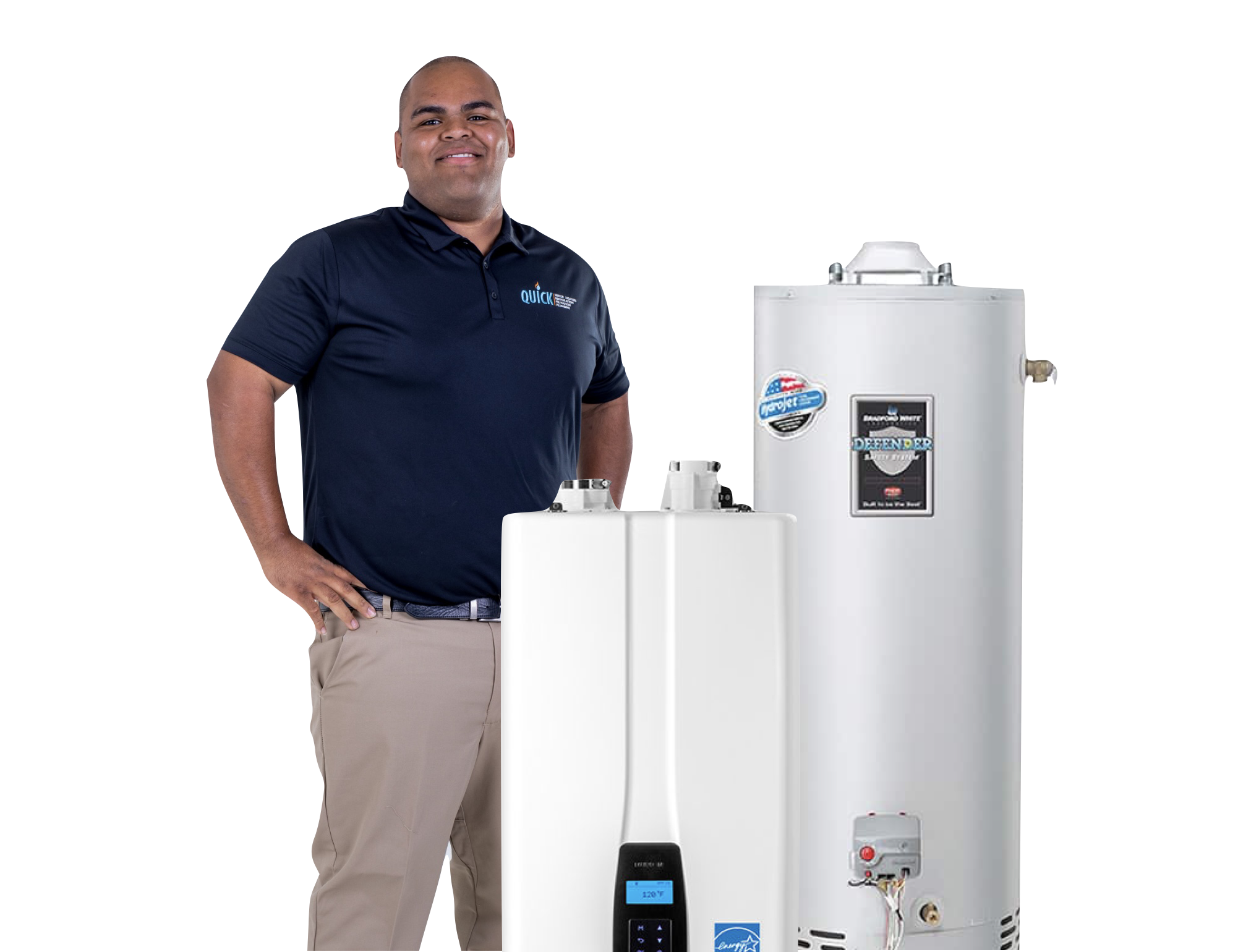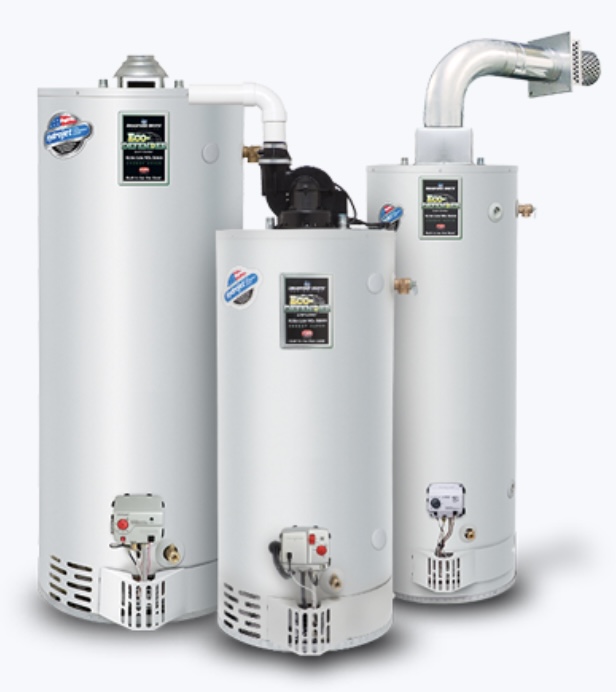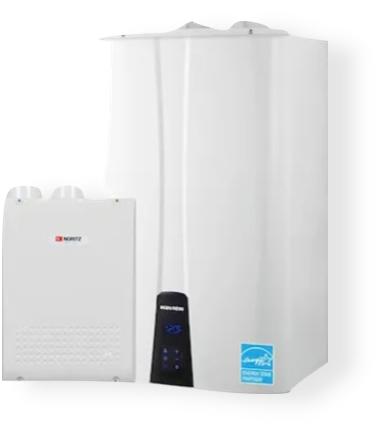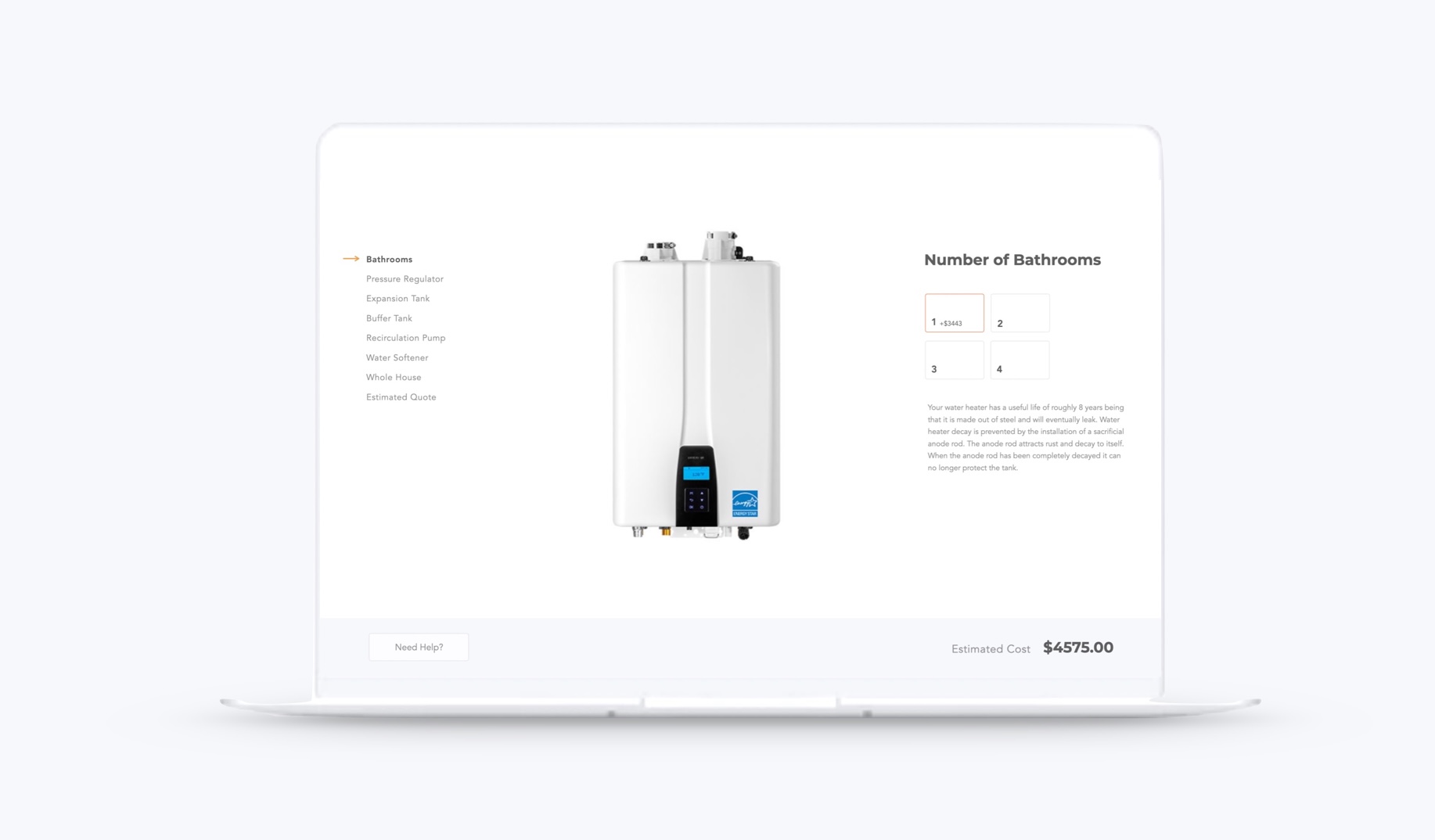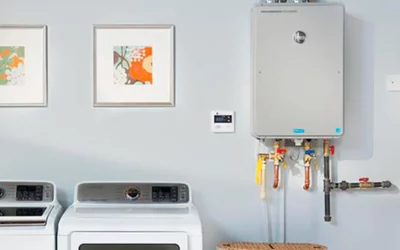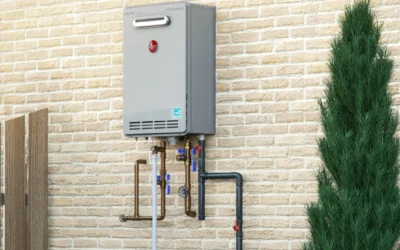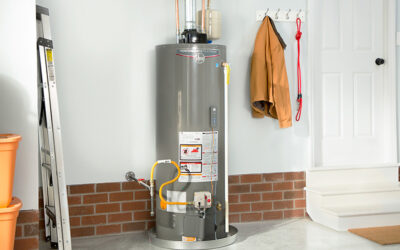If you’re experiencing issues with your gas hot water heater, you may be able to save time and money by attempting a DIY repair. This guide will provide you with step-by-step instructions and safety tips to help you troubleshoot and fix common problems with gas water heaters. From understanding the inner workings of a gas water heater to replacing faulty components, you’ll learn everything you need to know to get your hot water flowing again.
Introduction to Gas Water Heater Repair
The introduction to gas water heater repair provides an overview of the topic and sets the stage for the subsequent sections that delve into understanding gas water heaters, common problems, tools and materials needed for repair, a step-by-step guide, precautions and safety tips, and frequently asked questions.
Understanding Gas Water Heaters
Understanding Gas Water Heaters
Gas water heaters are a common type of water heating system that utilizes natural gas or propane as a fuel source. These heaters work by heating water through a burner located at the bottom of the tank. As the burner ignites, it heats up the water, which then rises to the top of the tank for use. Understanding how gas water heaters function is essential for troubleshooting and repairing any issues that may arise. By familiarizing yourself with the components and operation of gas water heaters, you can better diagnose and address problems such as pilot light failure, thermocouple issues, or gas control valve problems.
Common Problems with Gas Water Heaters
Common problems with gas water heaters can include pilot light failure, thermocouple issues, and gas control valve problems. These issues can often be resolved through DIY repair methods, saving homeowners time and money.
Pilot Light Failure
Pilot light failure is a common problem that can occur with gas water heaters. When the pilot light goes out, it prevents the burner from igniting and heating the water. There are several reasons why the pilot light may fail, such as a faulty thermocouple, a blocked pilot tube, or a gas supply issue. To address this issue, the first step is to turn off the gas supply to the water heater. Then, you can relight the pilot light following the manufacturer’s instructions. If the pilot light continues to go out or does not stay lit, it may be necessary to replace the thermocouple. This component is responsible for sensing the presence of the pilot flame and allowing the gas valve to stay open. By troubleshooting and resolving pilot light failure, you can ensure that your gas water heater functions efficiently and provides hot water as needed.
Thermocouple Issues
Thermocouple issues can often cause problems with gas water heaters. A thermocouple is a device that senses the temperature of the pilot flame and sends a signal to the gas control valve to keep the gas line open. If the thermocouple is faulty or not positioned correctly, it may not generate enough voltage to keep the gas valve open, resulting in the pilot light going out. In such cases, it is important to test the thermocouple using a multimeter and check for any signs of wear or damage. If necessary, the thermocouple can be replaced using a thermocouple replacement kit. It is important to follow the manufacturer’s instructions and ensure that the new thermocouple is properly positioned and secured to prevent future issues with the gas water heater.
Gas Control Valve Problems
Gas control valve problems can be a common issue with gas water heaters. If you are experiencing difficulties with your gas control valve, it is important to address the problem promptly to ensure the proper functioning of your water heater. One possible symptom of a gas control valve problem is the inability to regulate the temperature of the water. This could result in the water being too hot or too cold. Another indication of a gas control valve problem is if you notice a gas odor near the water heater. In such cases, it is crucial to turn off the gas supply immediately and seek professional help to prevent any potential hazards. Gas control valve problems can often be resolved by replacing the faulty valve, and it is recommended to consult a professional for assistance in diagnosing and fixing the issue.
Tools and Materials Needed for Repair
When it comes to DIY gas water heater repair, having the right tools and materials is essential. Some basic hand tools will be necessary for the repair process, along with a multimeter to test electrical components. Additionally, a thermocouple replacement kit will be needed to address any thermocouple issues that may arise. By ensuring you have these tools and materials on hand, you can confidently tackle the repair job.
Basic Hand Tools
When it comes to DIY gas water heater repair, having the right tools is essential. One of the most important tools you’ll need is a set of basic hand tools. These tools include wrenches, pliers, screwdrivers, and pipe cutters. With these tools, you’ll be able to disassemble and reassemble various components of your gas water heater with ease. Whether you need to tighten connections, remove screws, or cut pipes, having a set of basic hand tools will make the repair process much smoother.
Multimeter
A multimeter is an essential tool for diagnosing and troubleshooting issues with a gas water heater. This device is used to measure voltage, current, and resistance, making it invaluable when testing electrical components of the heater. With a multimeter, you can check if the electrical connections are intact and properly functioning, ensuring that the heater is receiving the necessary power. Additionally, a multimeter can help identify any faulty components that may need to be replaced. It is important to have a reliable and accurate multimeter when performing DIY gas water heater repairs to ensure accurate readings and efficient troubleshooting.
Thermocouple Replacement Kit
A thermocouple replacement kit is a necessary tool for repairing a gas water heater. The thermocouple is a crucial component that senses the pilot light’s presence and allows the gas control valve to stay open. Over time, thermocouples can wear out or become faulty, leading to issues with the pilot light and ultimately the functioning of the water heater. With a thermocouple replacement kit, you can easily remove the old thermocouple and install a new one, ensuring that your gas water heater operates efficiently and reliably.
Step-by-Step Guide to DIY Gas Water Heater Repair
The “Step-by-Step Guide to DIY Gas Water Heater Repair” provides detailed instructions for homeowners to fix their gas water heaters on their own, ensuring they can address common issues such as pilot light failure, thermocouple issues, and gas control valve problems.
1. Turning Off the Gas Supply
To safely begin the DIY repair process for your gas water heater, the first step is to turn off the gas supply. This ensures that there is no risk of gas leaks or accidents while you work on the unit. Locate the gas shut-off valve, which is typically located near the water heater. Turn the valve clockwise to shut off the gas supply. It is important to double-check that the gas is indeed turned off before proceeding with any further repairs or inspections. By following this precautionary step, you can ensure a safe working environment throughout the repair process.
2. Checking the Pilot Light
To check the pilot light on your gas water heater, follow these steps:
- Make sure the gas supply to the water heater is turned on.
- Locate the pilot light assembly, which is usually found at the bottom of the water heater.
- Remove the outer cover or access panel to expose the pilot light.
- If the pilot light is not lit, turn the gas control knob to the “off” position and wait for a few minutes.
- After waiting, turn the gas control knob to the “pilot” position.
- While holding down the control knob, use a long lighter or match to ignite the pilot light.
- Once the pilot light is lit, continue holding down the control knob for about a minute.
- Release the control knob and check if the pilot light remains lit.
- If the pilot light goes out after releasing the control knob, there may be an issue with the thermocouple or gas control valve.
- If the pilot light stays lit, you can proceed with testing other components or troubleshooting other problems.
Remember to refer to the manufacturer’s manual or seek professional assistance if you encounter any difficulties or are unsure about performing these steps on your own.
3. Testing the Thermocouple
To test the thermocouple of your gas water heater, you will need a multimeter. First, ensure that the gas supply is turned off. Then, locate the thermocouple, which is usually positioned near the pilot light. Disconnect the thermocouple from the control valve by loosening the nut connecting it. Set your multimeter to the millivolt setting and attach the leads to the thermocouple’s connectors. With the pilot light lit, observe the multimeter reading. A functioning thermocouple should produce a reading of around 25 millivolts. If the reading is significantly lower or zero, it indicates a faulty thermocouple that needs to be replaced. Remember to follow the manufacturer’s instructions when installing a new thermocouple.
4. Replacing the Gas Control Valve
To replace the gas control valve in your gas water heater, follow these steps:
- Turn off the gas supply to the water heater. This is crucial for your safety.
- Disconnect the gas line from the control valve using a wrench.
- Remove the screws or bolts holding the control valve in place.
- Carefully detach the wires connected to the control valve.
- Take out the old control valve and dispose of it properly.
- Install the new gas control valve by aligning it with the mounting holes and securing it with screws or bolts.
- Reconnect the wires to the appropriate terminals on the control valve.
- Reattach the gas line to the new control valve, making sure it is tightly connected.
- Turn on the gas supply and check for any leaks using a gas leak detector.
- If there are no leaks, ignite the pilot light and test the functionality of the new control valve.
Remember to always exercise caution when working with gas appliances and consult a professional if you are unsure or uncomfortable with any step of the repair process.
Precautions and Safety Tips
Precautions and safety tips are essential when working with gas water heaters to ensure a safe repair process. This section will provide guidance on gas leak detection, proper ventilation, and working with gas lines to prevent accidents and maintain a secure environment.
Gas Leak Detection
Gas leak detection is an important aspect of gas water heater maintenance and repair. It is crucial to be able to identify and address any potential gas leaks to ensure the safety of your home and family. Signs of a gas leak may include a strong odor of gas, hissing or whistling sounds near the gas lines, or dead plants or vegetation near the gas lines. If you suspect a gas leak, it is important to immediately turn off the gas supply to your water heater and contact a professional for assistance. Do not attempt to repair a gas leak on your own, as it can be extremely dangerous. Always prioritize safety when dealing with gas-related issues.
Proper Ventilation
Proper ventilation is crucial when it comes to gas water heater repair. This is because gas water heaters produce carbon monoxide, a toxic gas that needs to be safely vented out of the house. Without adequate ventilation, carbon monoxide can build up indoors and pose a serious health risk. It is important to ensure that the area around the water heater is well-ventilated, with proper air circulation and exhaust systems in place. Additionally, it is essential to regularly check and clean the vents to prevent any blockages that could hinder the proper flow of exhaust gases.
Working with Gas Lines
Working with gas lines requires caution and proper knowledge to ensure safety. Before attempting any repairs or maintenance on your gas water heater, it is essential to familiarize yourself with the gas lines and understand how they function. Gas lines carry flammable gas, so it is important to turn off the gas supply before starting any work. Additionally, it is crucial to have proper ventilation in the area where you will be working to prevent the buildup of potentially harmful gases. If you are not confident in your ability to work with gas lines, it is recommended to seek professional help to avoid any risks or accidents.
FAQ
The FAQ section provides answers to common questions about gas water heater repair, covering topics such as identifying malfunctions, the possibility of DIY repairs without professional help, actions to take if a gas smell is detected, recommended maintenance frequency, and cautionary advice on repairs not suitable for DIY attempts.
1. How can I tell if my gas water heater is malfunctioning?
There are several signs that can indicate a malfunctioning gas water heater, such as inconsistent water temperature, strange noises coming from the unit, or a noticeable decrease in hot water supply.
2. Can I repair a gas water heater without professional help?
Yes, it is possible to repair a gas water heater without professional help, but it is important to note that it can be complex and potentially dangerous. It is recommended to have a good understanding of gas water heaters and follow proper safety precautions before attempting any repairs on your own.
3. What should I do if I smell gas near my water heater?
If you smell gas near your water heater, it is important to immediately turn off the gas supply, open windows and doors to ventilate the area, and avoid using any electrical devices or open flames until a professional can inspect and address the issue.
5. Are there any DIY repairs that I should not attempt on my own?
While DIY repairs can save you money, there are certain repairs for gas water heaters that should not be attempted without professional help.


